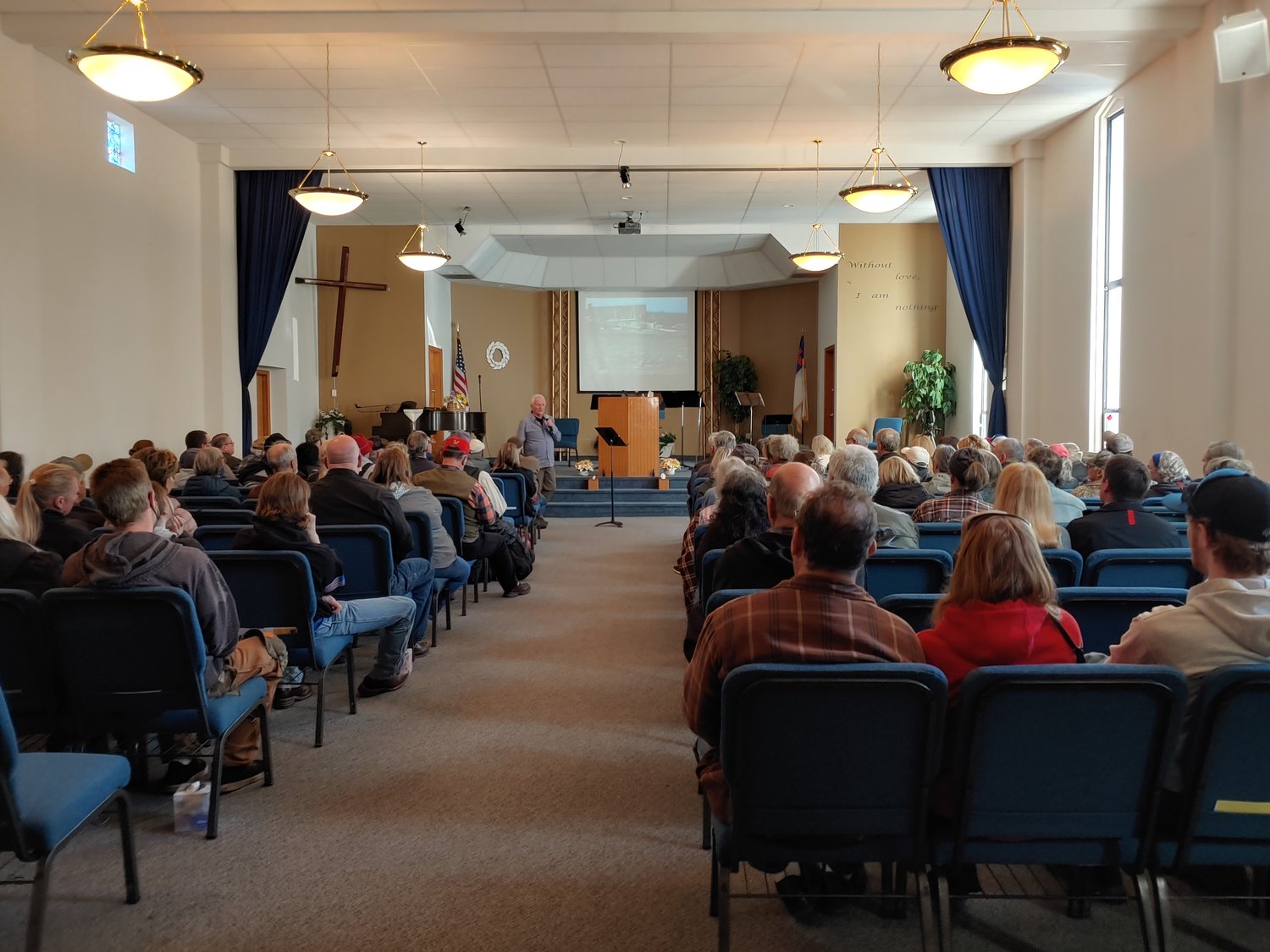By Lynnette Hoffman
Published: February 28, 2022

Lewis County residents attended a meeting to advocate against biosolids last Sunday.
On a rainy Sunday afternoon, about 100 people gathered at the farm of Tom and Sharon Layton. They were there to discuss a new business that is coming to Layton Prairie that may have serious adverse effects on the residents and quality of water and soil. The business is called Bio-Solids, but most refer to it as sewer sludge.
Currently there are 400 acres set aside for this in Layton Prairie that have recently been purchased by Dan Ritola along with acreage owned by Greg Armstrong. The company paying these individuals to spread biosolids is Tribeca. Spreading biosolids is a very lucrative business.
Biosolids that are class B are defined as: Biosolids Class B have undergone treatment that has reduced but not eliminated pathogens Bio-solids, commonly referred to as sewer sludge, is human waste that has gone through a sewer treatment plant.
The guest speaker at this event, Richard Honour with the Precautionary Group, has his doctorate and has studied sewer sledge, discussed the many hazards on health and animals who are eating foods treated with biosolids. In fact, Richard has been in the sewer sludge business since the 1960s and he has endured several types of cancer related to sewer sludge. He stated, "nearly all chronic diseases of man are incited in low levels of contaminants or pollutants. Long term exposure to sewer sludge has caused cancer and other chronic illnesses.
Richard stated, "Don't believe it's safe, it's toxic waste. There is no such thing as safe sewer sludge." Many wonder why they are hazards to your health, all medications end up in the sewage. Antibiotics that are in human waste end up on the field, as does every medication, chemical and illness.
Jeff Wilson is an activist against sewer sludge who lives in Toledo. He worked in the business and stated, "there were 60 of us, now only 5 are remaining alive."
The effects of sewer sludge have killed 55 of his friends.
read full article













